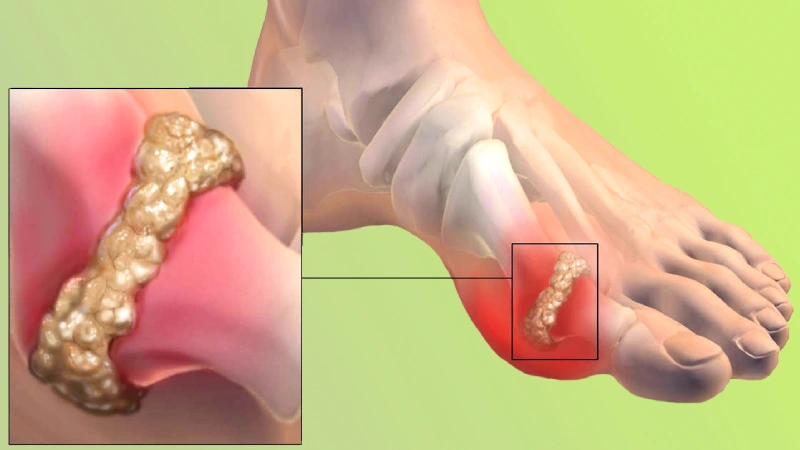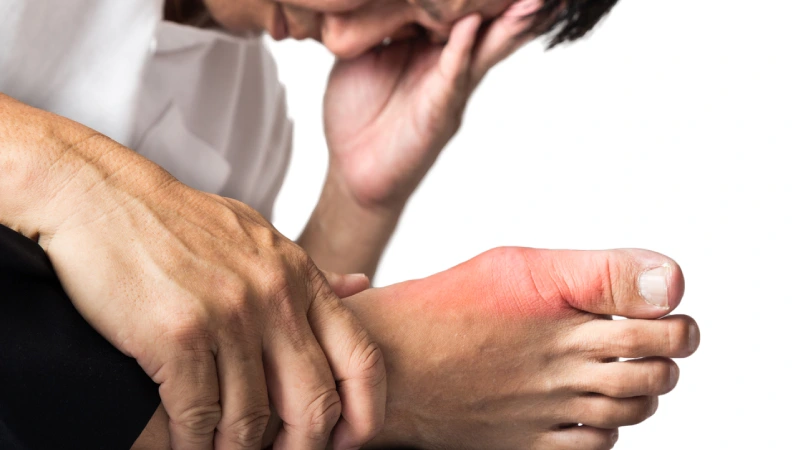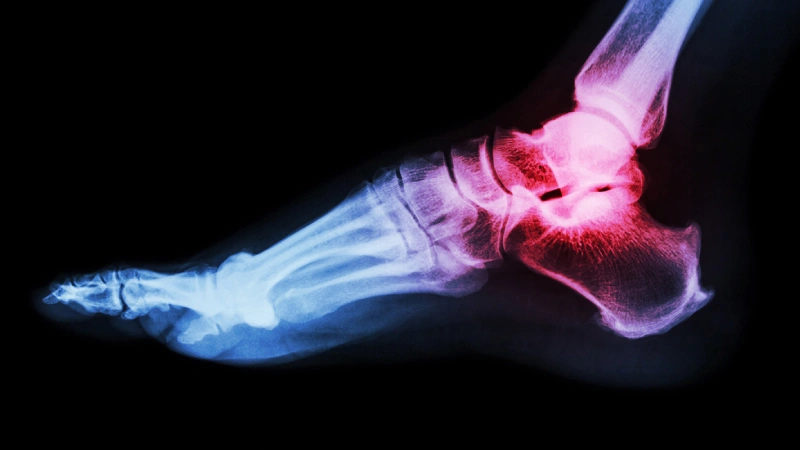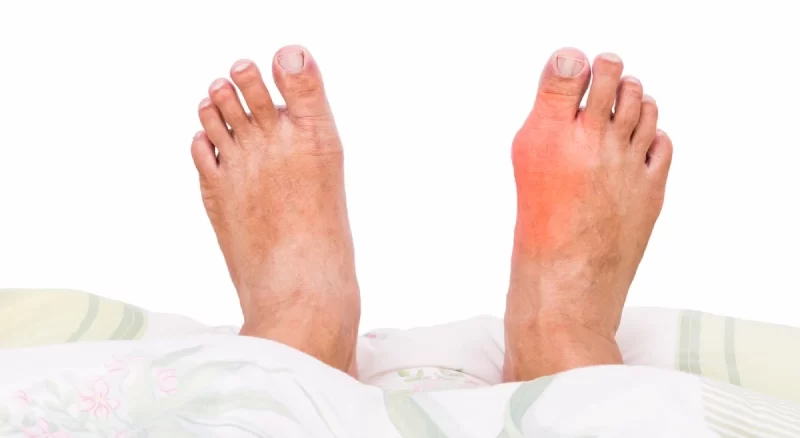There are lots of foot conditions such as flat foot, Plantar fasciitis, bunions, hammertoes, and … that most of them can be treated by conducting cosmetic foot surgery in Dubai. But gout is a painful and irritating kind of arthritis. When extra uric acid exists in the body, keen crystals might be formed in the big toe or further joints. These keen crystals cause events of inflammation, swelling and pain that are called gout attacks. Fortunately gout can be treated with taking medicines and changes in diet and lifestyle. In the following article we will check the causes, symptoms and treatment of this painful foot condition. At the end you will see how a big toe surgeon in Dubai can help.
How does gout develop?

The human body produces and makes uric acid pending the breakdown and downfall of chemicals in which are called purines found out in certain food and drinks. This ordinary secondary product goes across the kidneys and gets out the body while peeing.
√ Read more: Heel spurs, its diagnosis and treatment approaches
Situation that the body generates a lot of uric acid or the kidneys aren’t able to handle it properly. Thus as the body consists of high levels of uric acid (that is known as hyperuricemia), uric acid crystals could centralise in the joints. The extremely keen, needle-like crystals lead to gout. Despite this, a lot of patients with high levels of uric acid never get gout. The best solution to find out about the amount of uric acid in the body is getting help from a foot surgeon in Dubai.
What are the symptoms of gout?

An occurrence of gout is known as a gout attack. Gout attacks are significantly painful, irritating and could occur entirely suddenly, often over a night. Gout attacks may remain for one or two weeks. Among gout attacks, you might have no signs at all.
Pending a gout attack, symptoms and signs in the affected joint(s) might consist of:
- Extreme pain
- Getting red
- Being stiffness
- Swelling and inflammation
- Being sensitive, even to light and sparse touch like getting touched with a bedsheet.
- Feeling warmth
√ Read more: What is arthroplasty? its advantages and disadvantages
Who is most affected by gout?

This disease may affect everyone`s big toe, heel, knees, and ankle. It often happens earlier in male than females. It universally happens after women`s menopause. Male are three times more likely than females to get infected. Because the levels of uric acid in male is higher in most of their lifetime. Females attain these amount of uric acid levels after their menopause.
Note: if you get gout in your heel, it’s better to see a heel surgeon in Dubai as soon as possible.
People are more in danger of getting gout in case that:
- Suffer from obesity, or lots of extra weight
- Deal with congestive heart failure (chf)
- Have diabetes
- Inherited or family history of gout
- Have high blood pressure
- Struggle with kidney disease
People are more likely to get this disease if they:
- Eat food or drink products with high animal proteins
- Drink significant amount of alcohol
- Are on diuretics
√ Read more: What is an Achilles tendon and why is it damaged?
How is gout diagnosed?

In case you feel sudden, unexpected or extreme pain in a joint, it’s better to see your healthcare provider. The healthcare provider might refer you to a rheumatologist, a specialist in diseases such as gout and other types of arthritis.
Then when gout confirmed, your healthcare providers will consider a lot of things such as:
Symptoms and signs: The healthcare provider asks you to explain your signs, and times of occurrence and duration of last.
Physical tests: the healthcare provider will check the injured joint(s) to find out if there is swelling, redness, stiffness and warmth.
Blood function: Conducting a test could evaluate the amount of uric acid that exists in your blood.
Imaging tests: Taking pictures and imaging tests of the affected joint(s) such as X-rays, an ultrasound or MRI might be essential.
Aspiration: The healthcare provider might apply a needle to drain fluid from the joint. Applying a microscope, a group member could seek uric acid crystals (gout confirmation) or various problems (like bacteria with infection or other kinds of crystal).
How is gout treated?
As it was mentioned above, this disease is treatable. As a matter of fact the gout medicines are accessible in two kinds and concentrate on two various problems. The first kind will help to decrease the inflammation, swelling and ache connected to gout attacks. The second kind is used in order to prevent gout side effects by reducing the extent of uric acid that exists in the blood.
Which kind of medicine is suitable for you relies on the frequency and intensity of the signs and symptoms, together with other health conditions that you might suffer from.
Required medications to treat gout include:
- Nonsteroidal anti-inflammatory drugs. NSAIDs consist of over-the-counter medicines like ibuprofen and naproxen sodium, plus more-strong prescription NSAIDs like indomethacin or celecoxib. NSAIDs put the consumer at the risk of stomachache, bleeding and wounds.
- Colchicine. The healthcare provider might recommend colchicine, an anti-inflammatory medicine in which significantly decreases gout pain. The drug’s efficiency might be neutralised, however, it may consist of complications like nausea, vomiting and diarrhoea.
- Corticosteroids. Corticosteroid medicines like prednisone, might adjust gout swelling,inflammation and pain. This kind of medication might be consumed in the form of pills, or they could be injected into the joint. Complications of this medicine might consist of mood changes, enhance blood sugar levels and high levels of blood pressure.
Required medications to prevent gout side effects include:
In case you tolerate lots of gout attacks every year, or if these gout attacks are less repeated but typically painful, the healthcare provider might prescribe medication to decrease risk of gout-connected complications. If you observe signs of harm from gout on joint X-ray test, or you suffer from tophi, chronic kidney sickness or kidney stones, medicines to reduce the amount of uric acid in the body might be prescribed.
- Medicines that hold uric acid production. Medications like allopurinol and febuxostat can help with restricting the amount of uric acid that the body creates. Complications of allopurinol may include fever, pimple, hepatitis and kidney conditions. Febuxostat complications include pimples, nausea and decreased liver function. Febuxostat also can enhance the risk of heart-related death.
- Medicines which amend uric acid removal. Medications like probenecid can aid to improve the kidneys’ capability to omit uric acid from the body. complications might contain a pimple, stomach ache and kidney stones.
Conclusion
Gout is a usual sort of arthritis that leads to acute and critical pain, inflammation, and thickness in the joints. About 3 million Americans tolerate this foot condition. As a matter of fact the main reason for getting gout is the existence of too much uric acid in the body. In case you feel sudden and severe pain in your heel, big toe, ankle and knee joint, visit your foot physician immediately. If you feel warmth and inflammation in the joints, you may gain gout or you may be in danger of another disease such as an infection.




